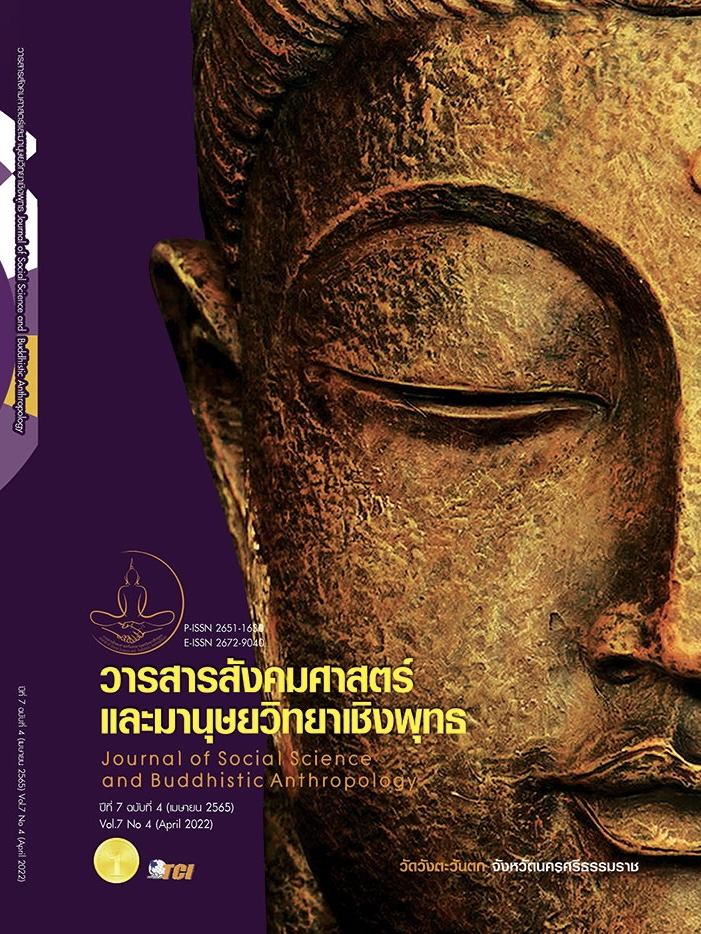THE HISTORICAL DEVELOPMENTS OF MUSLIM MUSIC IN CENTRAL REGION OF THAILAND
Keywords:
Muslim Music in Central Thailand, Development of Muslim Music, History of Muslim Music in Central ThailandAbstract
The objectives of this research article were to study the history and development of the musics of the Muslims in Central Thailand. In doing so, the process serves as a tool to illustrate the diversity of the music cultures of the Central Thai Muslims, some of which are the origin of non-Islamic traditional expressive cultures. The data of this qualitative study was collected using fieldwork method. The finding reveals that the history of the music culture of the Central Thai Muslims can be divided into three key periods. In the pre-1967 period, musical performance formats were simple formats with limited historical evidence. While the historical development of the music in this period could not be concretely determined, extant documents show that most performances involved rammana or frame drums, and the players were seated in circle, facing one another. The players would sing a praise to Prophet Muhammad. The song texts were taken from Mawlid al-Barzanjī. Also found were mulod or maulidurrasul recitation and performances like dhikr riap, naseb or mujyarood, dhikr pantun, and an abridged version of dhikr lum. The period between 1967 and 1990 saw the instruments from the West being introduced and added to the exiting musical performances, resulting in what is called Arab-Malay ensemble, also known as nasebprayuk or “Applied” nasep. Competitive format of nasep emerged during 1977 and 1983, and anti-Muslim-music movement began in 1979. The third period, 1900 to present, is marked by the increasing popularity of Western harmony in Anasyid songs as well as formation of Muslim musician’s association to strengthen and preserve their musical cultures.
References
จักรพงษ์ กลิ่นแก้ว. (2562). อุเละห์นบี: ดนตรีสรรเสริญศาสดามูฮัมหมัดของมุสลิมไทยภาคกลางมหาวิทยาลัยศรีนครินทรวิโรฒ. ใน วิทยานิพนธ์ศิลปศาสตรมหาบัณฑิต สาขาวิชามานุษยดุริยางควิทยา. มหาวิทยาลัยศรีนครินทรวิโรฒ.
จักริน จันทนภุมมะ. (2554). ดนตรีนาเสป กรณีศึกษา ชุมชนมุสลิมหมู่ที่ 2 ตำบลบึงน้ำรักษ์ อำเภอบางนํ้าเปรี้ยว จังหวัดฉะเชิงเทรา. ใน วิทยานิพนธ์ศิลปศาสตรมหาบัณฑิต สาขาวิชามานุษยดุริยางควิทยา. มหาวิทยาลัยศรีนครินทรวิโรฒ.
จุฑาศิริ ยอดวิเศษ. (2553). การอนุรักษ์และการพัฒนาดนตรีในศิลปะการแสดงพื้นบ้านไทยมุสลิม. ใน ดุษฎีนิพนธ์ปรัชญาดุษฎีบัณฑิต สาขาวิชาวัฒนธรรมศาสตร์. มหาวิทยาลัยมหาสารคาม.
นูรียัน สาแล๊ะ. (2540). ทีทรรศน์วัฒนธรรม ใน มะโย่ง: ความพยายามที่ลางเลือนในการสืบสานวัฒนธรรมให้คงอยู่. กรุงเทพมหานคร: บริษัท อัมรินทร์พริ้นติ้งแอนด์พับลิชชิ่ง จำกัด.
ปริญญา ปานนพภา. (2559). ดนตรีวิถีมุสลิมไทย กรณีศึกษาวงดนตรีนาเซบร่วมสมัยคณะเบบี้อาราเบีย ชุมชนสะและน้อย อ่อนนุช 54 กรุงเทพมหานคร. ใน วิทยานิพนธ์ศิลปะศาสตร มหาบัณฑิต สาขาวิชามานุษยดุริยางควิทยา. มหาวิทยาลัยศรีนครินทรวิโรฒ.
วีณา เอี่ยมประไพ. (2535). หลักฐานทางประวัติศาสตร์. กรุงเทพมหานคร: โอเดียนสโตร์.
อบู มันศูร. (2526). จริยธรรมอิสลาม. กรุงเทพมหานคร: อมรินทร์การพิมพ์.
เอนก นาวิกมูล. (2527). เพลงนอกศตวรรษ. กรุงเทพมหานคร: ธรรมสาร จำกัด.
ฮาซัน กบิลคาม. (2560). อิสลามจากคาบสมุทรอาระเบียสู่แผ่นดินชาวสยาม. กรุงเทพมหานคร: นัทชาปริ้นส์ติ้ง จำกัด.
Robertson, R. (1992). Globalization: Social Theory and Global Culture. LDN: Sage Publications.
Downloads
Published
How to Cite
Issue
Section
License
Copyright (c) 2022 Journal of Social Science and Buddhistic Anthropology

This work is licensed under a Creative Commons Attribution-NonCommercial-NoDerivatives 4.0 International License.








